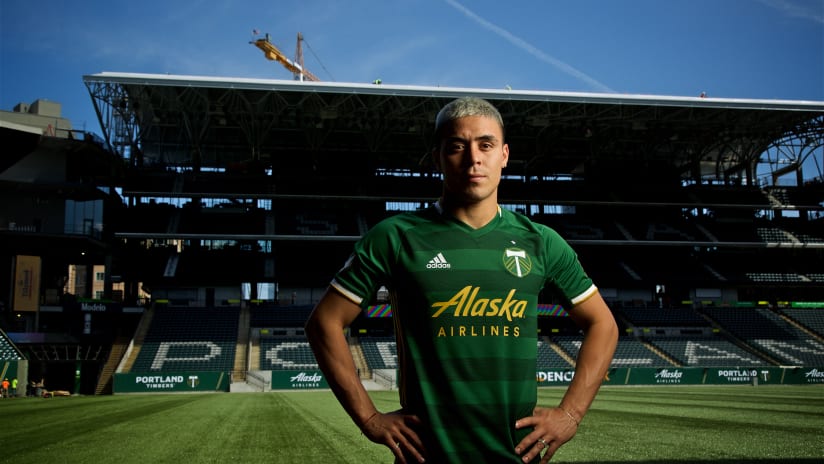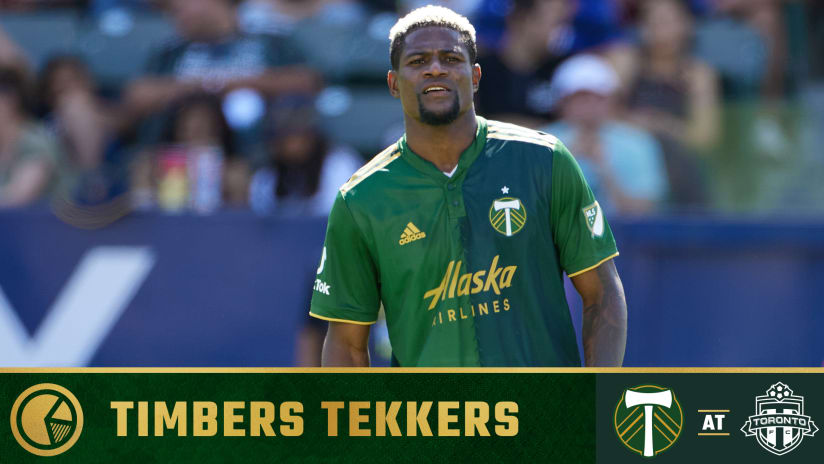When the Portland Timbers arrived in Costa Rica at the beginning of February, they did so with one of the most important spots on their depth chart open, the quest to fill the void having suffered a setback in the weeks before.
The team had been close to securing the transfer of a young attacker playing in Mexico, with negotiations between the Timbers and the player’s club temporarily auguring the end of a multi-month, multi-player process. But when the focus of those talks shifted from one of the Mexican team’s targets to another – from one type of player profile to another – the process deteriorated, then broke down.
These are the types of ebbs that happen when you’re looking to make a club-record, multi-year investment. In the strictest sense, they’re setbacks, but they’re also expected – resets that any experienced organization knows to plan for. High-value targets tend of have possessive owners, so in addition to being persistent, your search has to stay flexible.
Late January was the first time Portland’s flexibility had truly been tested, but as talks with one club reached an insurmountable obstacle, the team had to reassess its options. “We were still engaged in conversations with several different clubs about forwards,” Gavin Wilkinson, the team’s general manager and president of soccer remembers, but instead of departing their suburban Portland training center in late January with a clear idea of who would join the club, the technical staff’s brain trust – Wilkinson, technical director Ned Grabavoy and head coach Giovanni Savarese – had to regroup.
It was a process that started months before: far prior to end-of-season discussions that took place in the wake an MLS Cup final. From the moment in early 2018 when Fanendo Adi, once the team’s all-time leading scorer, was traded to FC Cincinnati, Wilkinson and his staff were forced to prioritize one of the many lists they keep of potential player targets. For every position, every type of player the club might need, there’s a pool of candidates ready to be explored at a moment’s notice. Very early last year, it became clear a new marquee attacker may need to be acquired for the 2019 season.
This is how the final stretch of that search unfolded: from those February moments when the process gained new focus; to the final weeks of a benchmark signing’s arrival; to the parameters the team put in place before lists became targets. This is how a 24-year-old Argentine attacker,
Brian Fernandez – an aspirational target whose price, at one time, left the team exploring other options – went from a Portland-soccer unknown to the most expensive signing in Timbers history.
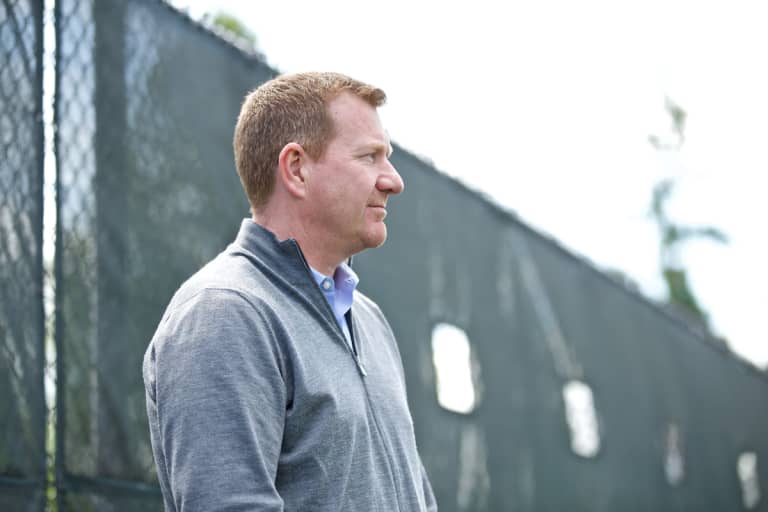
Timbers GM/president of soccer Gavin Wilkinson | Image: Craig Mitchelldyer / Portland Timbers
When Wilkinson, Grabavoy and Savarese sat down with team owner and president Merritt Paulson, there were very detailed parameters set.
Grabavoy’s thinks back beyond January, to the point when, as he describes it, the group realized it wanted “a needle in a haystack.” Long before a pursuit can start, a team’s decision makers have to settle on a profile – the type of player, in all his qualities, they feel warrants the use of a roster’s high-dollar spot.
Major League Soccer teams are only allowed to transcend their salary cap with impunity for three players. This target would be Portland’s third.
“We wanted a young, dynamic forward that was versatile,” Wilkinson remembers. “He had to be somebody that was good with the ball at their feet; somebody that would penetrate lines; somebody that could get behind defenses; but also, somebody that would require the attention of the opponent in every possible way.”
And that was just the on-field component.
“I don’t think people understand how detailed [the parameters] are,” Grabavoy continues. Staring out in May at the training ground in Beaverton, Grabavoy pauses, then adds a final note of perspective on the new talent that’s practicing in front of him.
“You want to try and check as many boxes as you possibly can. I don’t know if we’ve ever been able to check every box, so you’re going to have to concede.”
Versatility was a place where there could be no concessions. Whomever the team acquired, he had to be able to play more than one position to compliment Portland’s two other Designated Players,
Diego Valeri and Sebastián Blanco. Portland also needed a younger player, so all of their stars didn’t age out at the same time. In terms of skills, the Timbers needed somebody who would complement their DPs as well as provide flexibility for emerging forward Jeremy Ebobisse, all of whom, when the team built attacks, thrived in places in front of the defense. Portland needed a player that forced defenders to turn and run.
They were willing to pay a club-record fee for the right talent, but that reality comes with standards of its own. When you’re willing to max out your budget, you want a player who can make an impact immediately. The ideal target would not only be a proven commodity but somebody who had proved himself in multiple leagues, and in leagues beyond his home. After all, given where the Timbers were going to get the most return on their investment, a new player was going to have to step out of his comfort zone and into a new world.
There were also some more obvious considerations.
“You make comparisons with different targets that you have, of what you’re conceding where, and weigh it against each guy,” Grabavoy says, “but then there’s basic things, like does the player actually want to come to MLS? Because you can go and put an offer in for any player in the world. That doesn’t mean the player and the player’s agent are on board to come.”
“We have forwards listed one through four or five in a certain profile that are constantly being reviewed,” Wilkinson explains, the team’s perpetual scouting process giving them some idea of who, along the criteria they’d established, could be available. “That was the shortlist that existed, that was put together back in the earliest stages of the process.”
Soccer’s rumor mill eventually brought some of those names to light. Others remained below the radar, or emerged despite the team never breaking into an active pursuit. Throughout winter, though, one name never emerged.
“Fernandez was always in the mix,” Wilkinson says, even though in February, “we thought he was priced out of the market and unavailable for what we were looking at.”
That was at a point when the Mexican league was starting to feel the full brunt of its Fernandez phenomenon. He had been relatively quiet during his first months at Club Necaxa, scoring only four times during the 2018
Apertura – Liga MX’s first of two annual tournaments. Come mid-February, though, he’d scored six times in six games, restarting a spell of play that earned him a move from Chile the previous summer. There, with Unión in La Calera, he scored 11 goals in 12 league starts.
There was an issue in his past, with Fernandez having been suspended four years before. After returning to the game, he had trouble finding a consistent home. From Argentina to France, then France to Chile, the Santa Fe-born attacker remained derailed until his spell with Unión. But between his time in Chile’s
Primera División and Mexico’s – playing as a lone striker, in a pair, on both wings, and occasionally underneath another forward – Fernandez scored 27 times in 42 games – a startling 0.70 goals per 90 minutes.
“There was an intensity in everything that he does that made you feel like he’s a winner,” Savarese said, of his first impressions of Fernandez. “He’s one of those types of players who, when you find him in the street, he has so much personality, and he brings that personality to the game and makes the game even [better]. Those are the things that jumped out right away and made you feel like he could bring something good, [to Portland].”
It was the reason why Fernandez was always near the top of Portland’s forward list, even when he wasn’t the team’s primary target. But when January negotiations gave way to February needs, Fernandez got a new look.
“The interesting thing,” Grabavoy offers, “is that after finalizing the scouting process with Brian, he ticked so many of the different boxes that we originally looked for.”
Production. Positions. Career path. Playing style. They all fit the profile.
“Even with the age,” Grabavoy says. “We wanted to go with a younger player, but we wanted that player to also have had a level of success in a league or two and proven. If he had done it outside of his domestic country would be even better.
“We were really looking in that 20, 21, 24-year-old range, which was probably the hardest thing during the process, to find guys who were around that age but had enough level of success where we could say, ‘You know what, he’s probably ready to walk right into the league and hopefully contribute right away.’”
That he fit all the criteria gave Fernandez an expensive feel. Budget numbers had been set to cover not only a transfer fee but what the player’s wages would be over a three-to-four-year contract. Having just moved from one league to another – and beginning a pace that made him the second-leading scorer in Mexico’s 2019
Clausura – Fernandez’ next move might come at a premium, with his rekindled form potentially moving him beyond Portland’s price range.
It’s how a transfer market works where agents and intermediaries become driving forces, be it connecting teams through introductions, passing messages between parties, or getting their players’ names more prominently mentioned in transfer news. By the time everyone’s influence is felt, prices get inflated, with all parties except one benefiting from rising costs. Buyers end up fighting against a series of forces trying to inflate player values.
But as Portland was calibrating their winter search, a break emerged in the process, one that could prevent the process around Fernandez from spiraling out of control.
“It came back that we had a direct line with Necaxa,” Wilkinson remembers, about those moments when the team was reassessing the names on their forwards list. If the Timbers could work directly with Necaxa from an early stage, the move could take place in a type of transactional vacuum.
“I started speaking to the owner and the technical director at Necaxa and found out that it could be possible,” Wilkinson says, with the news changing the tone of Fernandez conversations internally.
“I had gotten a text from Gavin, and he had said, ‘What would you spend,’” Grabavoy remembers. “’What would you pay?’
“We started having more and more conversations, and at the time those questions were being asked, I wasn’t sure how serious things were.” It was still February, and coming out of negotiations for another player, there was still concern that cost could keep Fernandez just out of reach. With Wilkinson’s new connection to Nexaca, though, things changed quickly.
“As we started to have more detailed conversations,” Grabavoy recalls, “and we started to look at everything – the numbers, the wages … I think that’s when we had real conversations of, ‘I think this is the guy, we think this is the guy, and we need to make a push to go and try to make this happen.’”
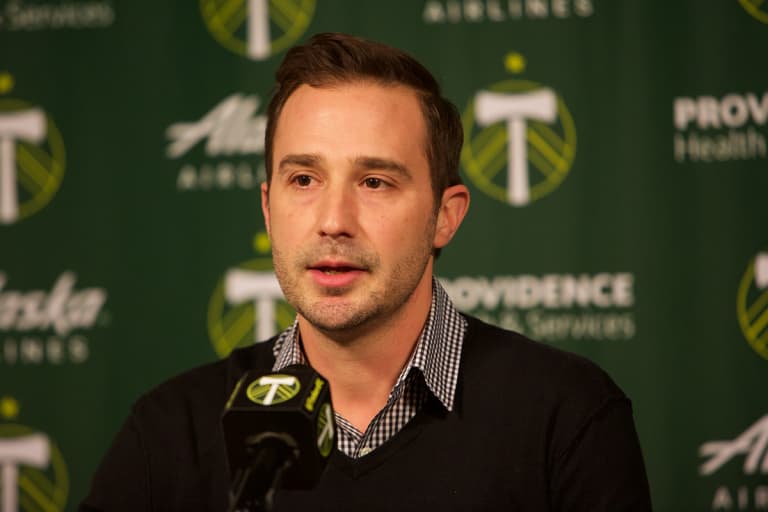
Timbers technical director Ned Grabavoy |
Image: Craig Mitchelldyer / Portland Timbers
That’s when the pressure really starts. From the outside, it’s natural to think that finding players, making lists, and narrowing down the candidates is the difficult part. And maybe for us, it would be. But there are decades of knowledge and preferences built up in people like Wilkinson, Grabavoy and Savarese, ones which, for them, accelerate the player evaluation process. For us, if we stop pretending we know more than we do, it might take months to complete an honest effort that yields four or five candidates that fit all of a club’s criteria. For Portland’s staff, at least 11 such lists are active and in constant flux.
But those lists of candidates only answer one of the process’s questions, a query that becomes irrelevant the second you decide to move forward. “If we were in pursuit, who are the players we’d look at for this position?” When that pursuit starts, the paradigm shifts. In this case, once Fernandez came into view, the question became, “Is this the player we want to make our club’s record signing?”
It’s hard to imagine a more stressful demand of technical staff. You have one need, a large budget, but no margin for error. If you get this decision wrong, you’ve severely hamstrung your chances, and for multiple years. The budget is spent, the Designated Player spot is gone, but you’ve still got the player. Whereas your competition is blazing forward with their DPs clicking, you’re left trying to work a problem.
“People think that when you’re given a bigger budget or more money it makes everything easier,” Grabavoy says. “It actually makes things more difficult. You can even look at Atlanta (United), which gets a massive budget to go and spend on players. Then think about the players that they’re looking at. It could be a number of different players. But it makes the decision that much more important.”
If you have, for example, $20 million to spend over four years and think your roster has six needs, you’re distributing your risk. Each decision only has so much downside potential. If a player you bring in doesn’t work, not only can you absorb that failure but, in the sports world, you can plan for it. It’s only one of many parts.
Designated Players are more than parts, and every time you ask a person to do something new, there’s the possibility of failure. If your one $20-million investment fails, you have a $20-million problem.
When Fernandez became Portland’s primary target, they began collecting as much information as possible – data that rounded out the film and numbers that helped vault the player onto the team’s short list. They went to work trying to assess the possibility of failure.
“For me, it’s a matter of reaching out to his previous coaches, teammates, previous teammates, the club, other players he’d played against in the league,” Wilkinson says, about building the full player portfolio. “It was a matter of collecting all the information possible in order to move him to the next stage. We were able to speak to, I think, three of his previous coaches. We were able to speak to three of his current teammates. We were able to speak to opponents that he had played against, other coaches that had coached against him. We were able to speak to ex-teammates.
“It was a little bit of everything. Then there was the further analysis of the [key performance indicators], looking at comparisons of what we needed out of that position, and then forming an opinion, and a collective opinion on behalf of the organization.”
“It was clear that we were looking for something specific,” Savarese says. Youth, production, positional versatility, as well as stylistic elements. Does he provide something different? And, can he do so at the right price?
“We focused on that from the beginning,” Savarese remembers. “It wasn’t easy, because what we were looking for required time. It required a big commitment. It required pieces to fall into the right place for it to happen, and it wasn’t easy.”
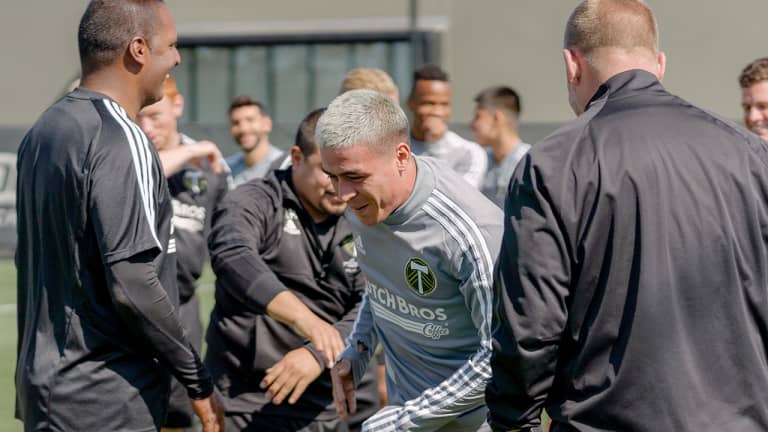
Image: Nick Carnera / adidas Creators Network
By the beginning of March, Wilkinson had connected in person with Necaxa’s ownership over a series of several visits. The additional scouting only made Fernandez more interesting, with his torrid streak in Mexico entering a third month. The due diligence of reaching out to as many sources as possible continued, while the player began hearing from his future club. What often becomes a complicated process was, in this case, proving relatively straight forward.
“They came down and told me about the club, and the facilities, and how beautiful the city was,” Fernandez remembers, of the first time he met with Timbers’ representatives. “They told me about what it would be like in Portland, and they were right. Everything here is beautiful: the (training) grounds; the facilities; the stadium.
“They were really honest about everything and were very clear about how they wanted everything to work out.”
By early April, other members of the Timbers’ staff were joining Wilkinson’s trips to Mexico. The structure of a deal was coming together, making “when” the only complication to “if” a deal could happen.
“I think the big question was can we get the player in before the close of the primary window,” Grabavoy says, “or would we have to wait for another five, six games, or however many games are in between.” Miss the May 7 transfer deadline, and Fernandez was out of the question until July. And who knows what could happen between May and July?
“The ability to get to pull it off now, is really, really helpful,” Grabavoy admits.
Helpful, and perhaps necessary. The Timbers insisted on it. Still, a handshake agreement before the deadline is no guarantee a deal will happen on May 7. In the soccer world, things can change with one result.
“I get situations all the time where it’s like, (the club) really want to move the player,” Grabavoy explains, “the player wants to move, and then one week later, the coach is fired, a new coach is in, and the coach has basically said he wants to give [the player] a different chance. And then you’re like, ‘OK, he’s not an option, anymore?’ But it happens in MLS, too, so you have to have an understanding of it that things can change at any moment.
“I know when we were down in Mexico and had the chance to sit down with [Fernandez] and had a chance to sit down with the club, we felt good that it had a good possibility of it happening. But then, once again, you know how much went into it. So, you’re kind of waiting on your hands, a little bit.”
On the back of Fernandez’s scoring, Necaxa surged into Mexico’s top four, giving a feeling of inevitability to a potential playoff spot. Mexico’s Liguilla wouldn’t start until after the May 7 close of the United States’ primary transfer window. Battling for the Clausura’s golden boot, Fernandez appeared to be perpetually elevating his value, something else that could have complicated negotiations.
At that point, though, the relationship that’d formed between Wilkinson and his Nexaca counterparts was able to win out.
“One of the key things was just the open and honest communication with Necaxa, the professionalism they displayed,” he said. “After I was put into a position where I could speak to the owner about what their expectations were and finding out everything we needed to know about the player, it’s been one of the more transparent transactions that I’ve ever been a part of.”
On Monday, May 6, 2019, Brian Fernandez was announced as the Timbers’ new Designated Player – the club’s record signing. He was on a flight from Mexico later that day, scarfed by fans at Portland International Airport that night, and at the team’s Beaverton Timbers Training Center the next morning. One day later, he was in front of Portland’s media for the first time, sharing his first impressions of his new home.
By then, weeks of reported speculation had cast the move as inevitable, a reality that was born of over a month’s meetings between the two clubs. Even before that, going back well into the 2018 season, the Timbers’ planning was already in motion, with a change of course near the end of January blazing a path toward the Mexican league star.
It’s a move that comes with risk. All signings of this magnitude do. But from the moment an initial list of players came together through the meetings and conversations that carried the process through April, the Timbers worked to make that risk acceptable. Now, all that’s left is to let the process play out on the field.
“I keep telling everyone, this is when the hard work begins,” Wilkinson says. The team has to make their new DP pay off.

